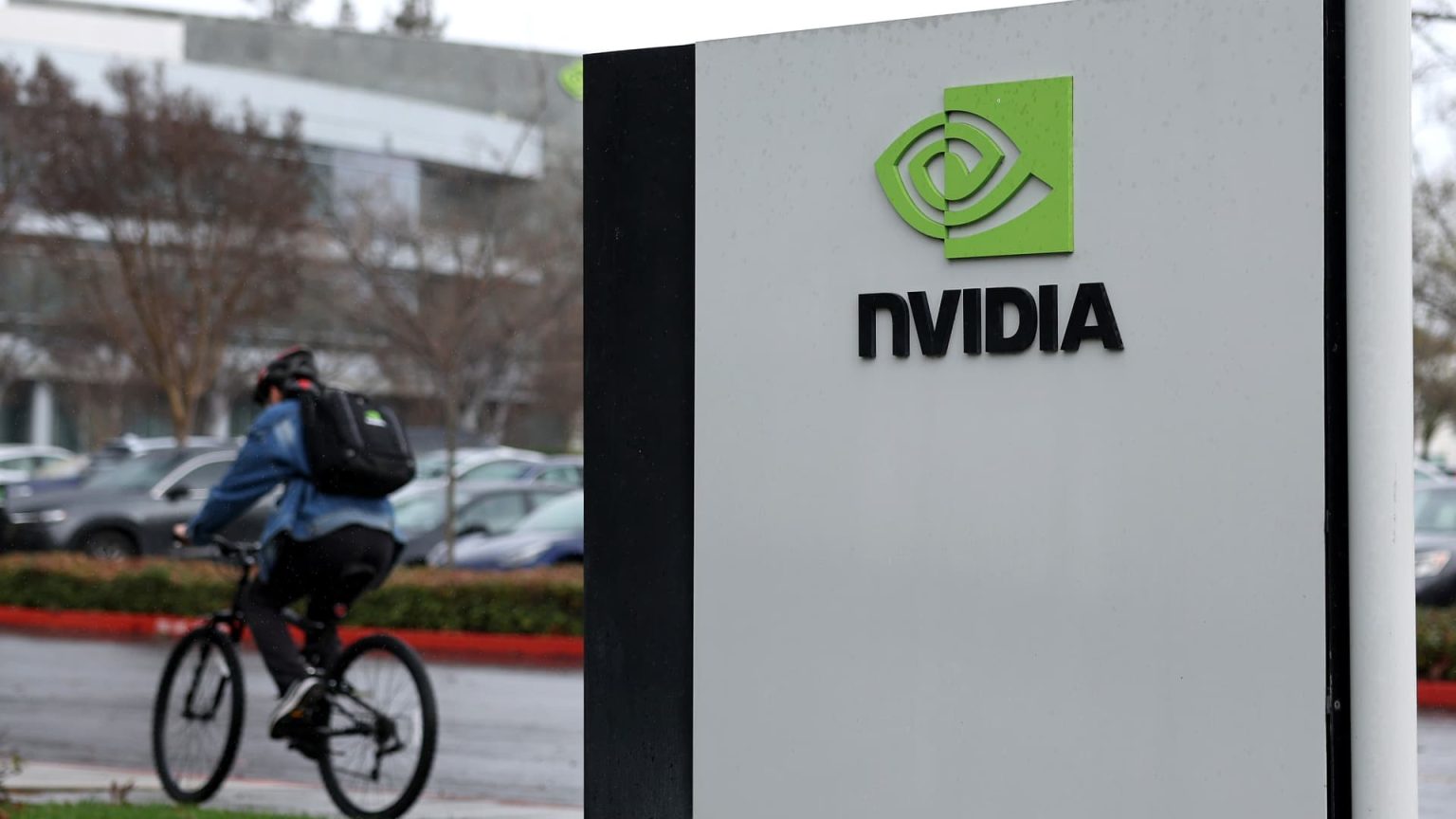Stock splits like Nvidia’s don’t matter, or do they? That debate seems to come up every time a new company announces plans to complete one. As with many investing questions, the answer is: It depends. Plenty of market observers downplay the importance of stock splits, arguing that a company carving up its stock into lower-priced pieces doesn’t change a thing about its underlying fundamentals. They’re not necessarily wrong. But we believe there’s more to the story, which is why Jim Cramer often encourages companies with high-dollar stocks to split. That’s been happening quite a bit in recent months. Walmart, Nvidia and Chipotle have all announced plans to do so. Walmart’s 3-for-1 split took effect in February , while Nvidia and Chipotle’s are coming up soon. With its stock hovering around $1,200 a share, Nvidia’s 10-for-1 split kicks in after Friday’s market close. Chipotle shares will begin trading on a 50-for-1 split adjusted basis June 26. Here’s a closer look at both sides of the debate, starting with the crowd that argues there’s no real benefit. No fundamental change: The primary argument for why splits don’t matter is that they don’t impact the valuation of the company or shareholders’ position in any fundamental away. Take Nvidia’s 10-for-1 split, for example. A shareholder that holds a single share of Nvidia at $1,200 will now own 10 shares at $120 apiece. Either way, the position is worth $1,200. And there’s no difference to the company’s market valuation. A split isn’t going to impact sales or net income, nor will it have an impact on the cash flows or the balance sheet (aside from the number of shares outstanding listed in the equity section). Commission costs: Another knock against splits is that institutional investors pay commissions on a per share basis. So, a 10-for-1 split, like we are going to see with Nvidia after the close Friday, means that the commission for institutions to move in and out of Nvidia’s stock is going up 10-times. It doesn’t really matter for home gamers that buy and sell with zero commissions fees, but it can certainly add up for institutional investors. The other side of the debate is where the Club sits. The way we see it, a lower share price can benefit small investors and employees at the companies alike. Accessibility : For starters, a lower stock price makes shares more accessible to those investing smaller amounts. While buying fractional shares has been possible for many years, not everyone likes the idea of owning a fraction of a share. Splitting shares addresses this by allowing folks to purchase full shares at a lower price. Of course, this may simply be a psychological thing — wanting to own full shares and not fractions of a share. But in any case, it likely will alter the behavior of folks who have avoided high-quality companies with high-dollar stocks simply because they didn’t want to own a piece of a stock. Position management : Stock splits don’t impact the total value of a position, but they can make it easier to manage the size of a position going forward. Lower prices provide more optionality. Sticking with our Nvidia example, investors will be able to trim or add to positions in $120 increments, as opposed to $1,200 increments. Yes, we could use fractional shares — but, again, some folks simply want to deal in full shares and a lower share price makes that possible. A high share price makes averaging in far more difficult, or maybe even impossible since each purchase is $1,200. That’s not an immaterial amount for individuals who are just learning to invest with a smaller account size, as well as even seasoned investors who aren’t comfortable committing larger sums all at once. In an investment account with $10,000, a single share of Nvidia is 12% of the portfolio. That’s larger than what many might consider a “full position” size. Plus, a hallmark of our investment strategy is to never buy full positions at once; instead, we average in over several buys in order to improve our overall cost basis. A lower share price makes that far more manageable. Stock-based compensation : This is more about a company’s employees, but having a lower price per share also offers increased optionality when issuing stock-based comp, either as shares, or even more so as options. Remember, an options contract represents 100 shares. So for example, if Nvidia wanted to issue an employee a stock option, that meant it had to compensate in increments of $120,000 (100 shares at $1,200). By splitting 10-for-1, Nvidia can now payout stock options in increments of $12,000 (100 shares at $120 apiece). Clearly, employee compensation in the form of stock options becomes far more manageable. When announcing their decisions to split their stock this year, management at Walmart, Chipotle and Nvidia all noted the employee compensation benefits. Options The impact of stock splits is clearly felt in the options market – whether that is good or bad, well, it depends on the investor. For us at the Club, we don’t use options to trade or hedge; we operate a long-only portfolio. But we recognize that options activity is a force in the market. A stock split like Nvidia’s makes the amount of money needed to buy and sell options contracts much smaller because, remember, those trades are executed in 100-share increments. By lowering that financial barrier to entry, options trades become more accessible. As a result, this could increase the level of options activity around a stock. At the same time, the additional accessibility could bring on more volatility because a large amount of investors are executing these trades, including those who are perhaps attracted to the more “gambling-like” aspect of options. Of course, the impact such market participants can have on a stock is going to be impacted by the market cap. It’s not a major concern for us, as long-term investors volatility can be viewed more as opportunity than risk. Bottom line Stock splits don’t have any impact on a company’s underlying business fundamentals — and, therefore, our determination on whether a company is investable. Still, they absolutely impact an investor’s ability manage their own portfolio. Because lower share prices let individual investors better apply the principals and disciplines required to be good portfolio managers, we love the idea of stock splits whenever share prices start to get too high. By keeping share prices lower, companies are not only helping individual investors access the stock, but they are also allow shareholders to better enter, trim and exit their positions. Stock splits also have ripple effects in the options market, which some traders and investors use to augment exposure and hedge their existing positions. (Jim Cramer’s Charitable Trust is long NVDA. See here for a full list of the stocks.) As a subscriber to the CNBC Investing Club with Jim Cramer, you will receive a trade alert before Jim makes a trade. Jim waits 45 minutes after sending a trade alert before buying or selling a stock in his charitable trust’s portfolio. If Jim has talked about a stock on CNBC TV, he waits 72 hours after issuing the trade alert before executing the trade. THE ABOVE INVESTING CLUB INFORMATION IS SUBJECT TO OUR TERMS AND CONDITIONS AND PRIVACY POLICY , TOGETHER WITH OUR DISCLAIMER . NO FIDUCIARY OBLIGATION OR DUTY EXISTS, OR IS CREATED, BY VIRTUE OF YOUR RECEIPT OF ANY INFORMATION PROVIDED IN CONNECTION WITH THE INVESTING CLUB. NO SPECIFIC OUTCOME OR PROFIT IS GUARANTEED.
Read the full article here











